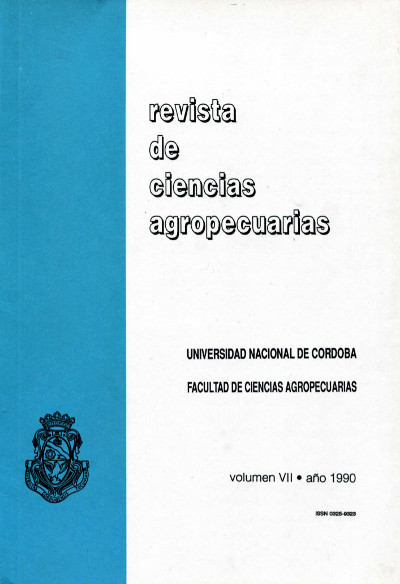Description and evaluation of a colchicine treatment method in wheat (Triticum aestivum L.) by rye (Secale cereale L.) hybrids
Main Article Content
Abstract
This paper deals with the description and evaluation of a method of colchicine treatment called "Tiller Injection Method" to obtain duplication of chromosome number in wheat (Triticum aestivum L.) x rye (Secale cereale L.) hybrids. Emmasculations and crossings to obtain the F1 hybrids were manually performed. "Tiller Injection Method" with "Modified Crown Method" were compared in the first year of evaluation. There were no significant differences in the statistical analysis of the number of polyploid plants obtained with both methods; however, great differences were observed in the colchicine consumption, it being notably lower when using the "Tiller Injection Method". Thus, this method allows a large number of plants to be treated with a lower drug concentration. In the following two years, only the "Tiller Injection Method" was used. Treatment efficiency increased in the third year of the experiment, thus yielding better results.
Article Details

This work is licensed under a Creative Commons Attribution-ShareAlike 4.0 International License.
How to Cite
References
Briggle, L. W. (1969). Triticale: A review. Crop Science, 9(2), 197-202.
Bushuk, W., & Larter, E. N. (1980). Triticale: Production, chemistry, and technology. Advances in Cereal Science and Technology, 3, 115-157.
Cauderon, Y., & Saigne, B. (1961). Obtention d'amphiploïdes à partir de F1 (Triticum aestivum L. x Secale cereale L.). Annales de l'Amélioration des Plantes, 11, 369-373.
Dermen, H., & Emsweller, S. L. (1961). The use of colchicine in plant breeding. Agricultural Research Service, U.S. Department of Agriculture, ARS, 23-24. Mimeograph. Quoted by Burnham, 1962.
Dixon, W. J., & Massey, F. J. (1971). Introducción al análisis estadístico (2a ed.). McGraw-Hill.
Larter, E. N. (1974). A review of the historical development of triticale. In C. C. Tsen (Ed.), Triticale: First man-made cereal (pp. 35-52). American Association of Cereal Chemists.
Muntzing, A. (1973a). International Triticale Symposium. CIMMYT.
Perak, J. T. (1940). Triticum durum tetraploide obtenido por colchicina. Anales del Instituto Fitotécnico de Santa Catalina, 2, 7-8.
Rommel, M. (1961). Aneuploidy, seed set and sterility in artificially induced autetraploid Hordeum vulgare L. Canadian Journal of Genetics and Cytology, 3, 272-282.
Sears, E. R. (1941a). Amphidiploids in seven chromosome triticinae. Research Bulletin, Missouri Agricultural Experiment Station, 336, 1-10.
Sears, E. R. (1941b). Chromosome pairing and fertility in hybrids and amphidiploids in the triticinae. Research Bulletin, Missouri Agricultural Experiment Station, 337, 1-10.
Siddiqui, K. A. (1971). Induction of polyploidy in multigenerichybrids in the group Triticeae. Hereditas, 67(2), 191-204.
Wilson, A. S. (1875). On the fertilization of cereals. Transactions of the Proceedings of the Botanical Society of Edinburgh, 12, 237-242.
Zillinsky, F. J. (1974). The development of triticale. Advances in Agronomy, 26, 315-346.





